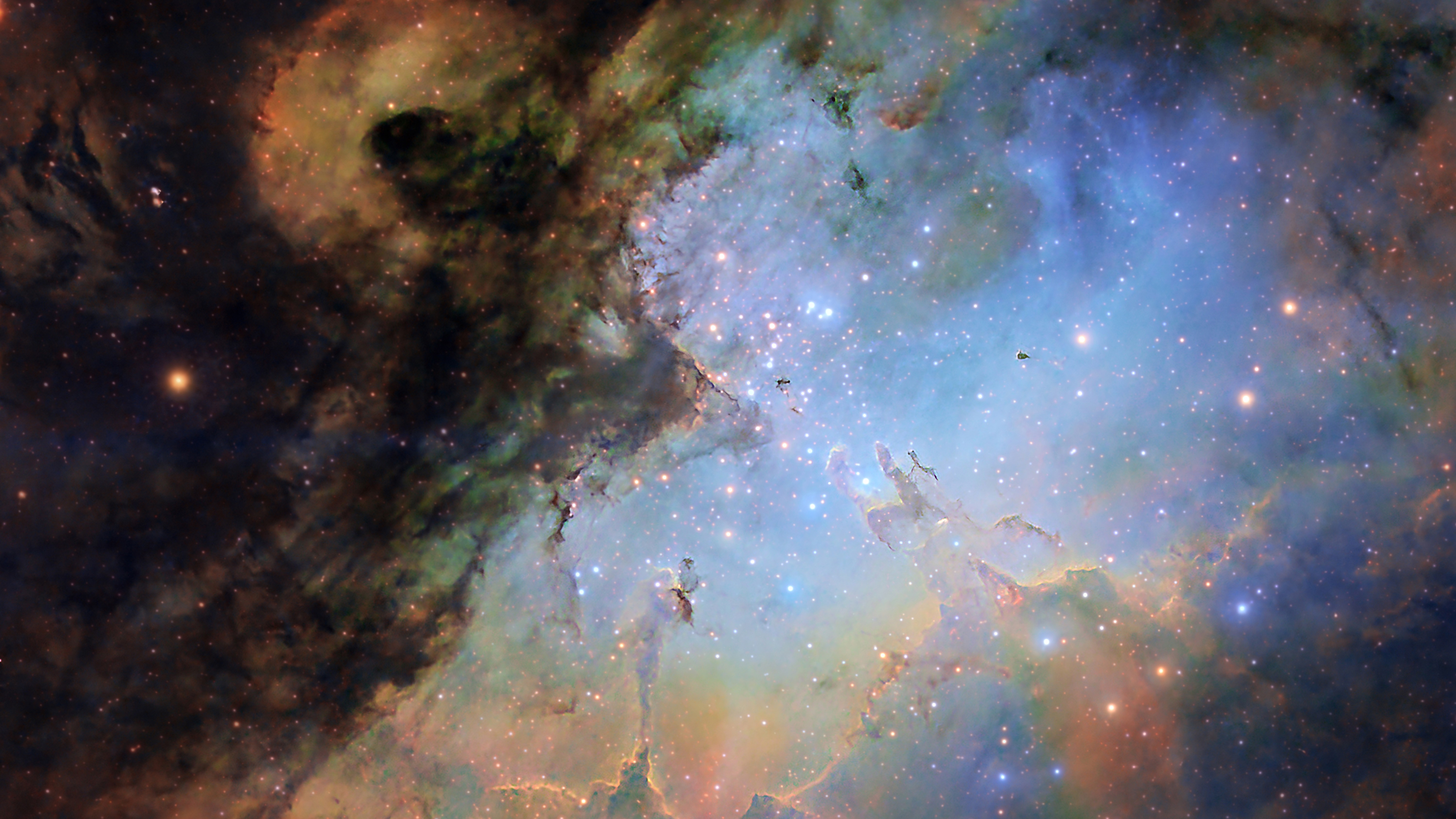0 Reacties
0 aandelen
494 Views

Bedrijvengids
Elevate your Sngine platform to new levels with plugins from YubNub Digital Media!
-
Please log in to like, share and comment!
-
 WWW.LIVESCIENCE.COMThe universe is dying much faster than scientists thought, new study suggestsAstrophysicists have proposed a new theoretical maximum lifespan for the universe, which suggests that dead stars are decaying much faster than previously thought. The estimate of stellar remnant decay is based on Stephen Hawking's famous black hole radiation theory.0 Reacties 0 aandelen 497 Views
WWW.LIVESCIENCE.COMThe universe is dying much faster than scientists thought, new study suggestsAstrophysicists have proposed a new theoretical maximum lifespan for the universe, which suggests that dead stars are decaying much faster than previously thought. The estimate of stellar remnant decay is based on Stephen Hawking's famous black hole radiation theory.0 Reacties 0 aandelen 497 Views -
 WWW.LIVESCIENCE.COM'Truly miraculous': Common gut microbe shows promise as fatty liver disease treatmentResearchers shed light on the "dark matter" of the gut, revealing a species of fungus that could potentially help counter fatty liver disease. The research is in its early days, though.0 Reacties 0 aandelen 487 Views
WWW.LIVESCIENCE.COM'Truly miraculous': Common gut microbe shows promise as fatty liver disease treatmentResearchers shed light on the "dark matter" of the gut, revealing a species of fungus that could potentially help counter fatty liver disease. The research is in its early days, though.0 Reacties 0 aandelen 487 Views -
 WWW.IFLSCIENCE.COMHomo Naledi Had Hands That Rock Climbers Would Be Jealous OfLet's get to grips with human hand evolution.0 Reacties 0 aandelen 508 Views
WWW.IFLSCIENCE.COMHomo Naledi Had Hands That Rock Climbers Would Be Jealous OfLet's get to grips with human hand evolution.0 Reacties 0 aandelen 508 Views -
 WWW.IFLSCIENCE.COMNew Species Of "Heavenly" Tiny Metallic Poison Dart Frog Discovered In The AmazonWhoever said you can't wear spots and stripes never met this frog.0 Reacties 0 aandelen 505 Views
WWW.IFLSCIENCE.COMNew Species Of "Heavenly" Tiny Metallic Poison Dart Frog Discovered In The AmazonWhoever said you can't wear spots and stripes never met this frog.0 Reacties 0 aandelen 505 Views -
 WWW.IFLSCIENCE.COMFirst Ever Visible Green Aurorae Seen On MarsThis is the first ever detection of any type of aurora from the ground on another world.0 Reacties 0 aandelen 488 Views
WWW.IFLSCIENCE.COMFirst Ever Visible Green Aurorae Seen On MarsThis is the first ever detection of any type of aurora from the ground on another world.0 Reacties 0 aandelen 488 Views -
 WWW.DUALSHOCKERS.COMMortal Kombat 1 Definitive Edition Released, Includes All DLC CharactersIt looks like NetherRealm Studios might be ready to move on from Mortal Kombat 1.0 Reacties 0 aandelen 485 Views
WWW.DUALSHOCKERS.COMMortal Kombat 1 Definitive Edition Released, Includes All DLC CharactersIt looks like NetherRealm Studios might be ready to move on from Mortal Kombat 1.0 Reacties 0 aandelen 485 Views -
WWW.THEKITCHN.COM13 Healthy Snack Ideas for ToddlersThey'll love 'em.READ MORE...0 Reacties 0 aandelen 470 Views
-
 BGR.COMHow to use TikTok AI Alive to turn photos into videosTikTok's future in the US might be uncertain, but the app keeps adding features for its fans. That is, if turning still images into fake videos with AI counts as TikTok getting better. I'm not the biggest fan of genAI tools that alter photos to the point where you end up with a completely different "memory," especially when most AI-generated or AI-edited images aren't clearly marked.The same goes for making fake videos from still images, a newer AI trick that's likely to catch on soon. A few days ago, Chinese smartphone maker Honor announced that its upcoming Honor 400 phones will feature an image-to-video AI feature built with Google's Gemini AI.TikTok's new AI Alive feature is similar, with the key difference being that you control the output. Honor's feature generates random videos from photos, while AI Alive lets you guide the result by entering a text prompt.Google teaming up with Honor on this suggests Gemini might eventually support something similar. Until then, you can try AI Alive on TikTok to turn your photos into videos.Continue reading...The post How to use TikTok AI Alive to turn photos into videos appeared first on BGR.Today's Top DealsAmazon deals: 20% off gift cards from Amazon, $553 unlocked iPhone 15, $114 standing desk, moreAmazon gift card deals, offers & coupons 2025: Get $400+ freeTodays deals: $720 Apple Watch Ultra 2, $6.50 Anker fast chargers, $35 2K camera drone, Fitbit sale, moreBest Fire TV Stick deals for May 20250 Reacties 0 aandelen 496 Views
BGR.COMHow to use TikTok AI Alive to turn photos into videosTikTok's future in the US might be uncertain, but the app keeps adding features for its fans. That is, if turning still images into fake videos with AI counts as TikTok getting better. I'm not the biggest fan of genAI tools that alter photos to the point where you end up with a completely different "memory," especially when most AI-generated or AI-edited images aren't clearly marked.The same goes for making fake videos from still images, a newer AI trick that's likely to catch on soon. A few days ago, Chinese smartphone maker Honor announced that its upcoming Honor 400 phones will feature an image-to-video AI feature built with Google's Gemini AI.TikTok's new AI Alive feature is similar, with the key difference being that you control the output. Honor's feature generates random videos from photos, while AI Alive lets you guide the result by entering a text prompt.Google teaming up with Honor on this suggests Gemini might eventually support something similar. Until then, you can try AI Alive on TikTok to turn your photos into videos.Continue reading...The post How to use TikTok AI Alive to turn photos into videos appeared first on BGR.Today's Top DealsAmazon deals: 20% off gift cards from Amazon, $553 unlocked iPhone 15, $114 standing desk, moreAmazon gift card deals, offers & coupons 2025: Get $400+ freeTodays deals: $720 Apple Watch Ultra 2, $6.50 Anker fast chargers, $35 2K camera drone, Fitbit sale, moreBest Fire TV Stick deals for May 20250 Reacties 0 aandelen 496 Views -
 TECHCRUNCH.COMWaymo recalls 1,200 robotaxis following low-speed collisions with gates and chainsWaymo issued a software recall on 1,200 self-driving vehicles after some of its robotaxis were involved in minor collisions with gates, chains, and other gate-like roadway objects. The software update, which was first reported by Reuters, was conducted late last year, according to documents filed with the National Highway Traffic Safety Administration. The Alphabet-owned company []0 Reacties 0 aandelen 500 Views
TECHCRUNCH.COMWaymo recalls 1,200 robotaxis following low-speed collisions with gates and chainsWaymo issued a software recall on 1,200 self-driving vehicles after some of its robotaxis were involved in minor collisions with gates, chains, and other gate-like roadway objects. The software update, which was first reported by Reuters, was conducted late last year, according to documents filed with the National Highway Traffic Safety Administration. The Alphabet-owned company []0 Reacties 0 aandelen 500 Views




